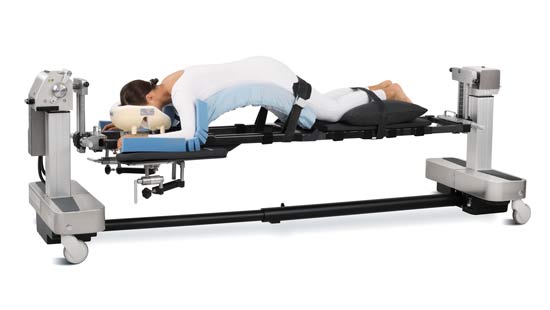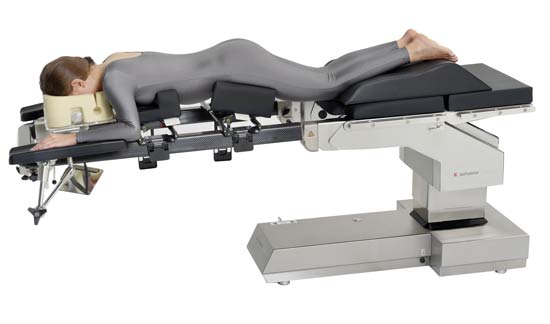Spine tables are highly configurable, versatile and functional, and key to achieving clinical success in a specialty known for complex cases. When evaluating the options for purchase, the top concern is finding the right fit for your facility in terms of safety, surgeon preference and intended use.
• Surgeon preferences. Our surgery center's lone spine surgeon requires prone positioning attachments to perform laminectomies, microdiscectomies, transforaminal lumbar interbody fusions (TLIFs) and posterior lumbar interbody fusions (PLIFs). As a result, we needed both lower leg slings and flat pieces to interchange, dependent on the procedure. The abilities and preferences of our spine surgeon did not require us to focus on higher functionality, such as rotating the surface for anterior/posterior procedures. In our case, there was no need to spend on unnecessary bells and whistles. We just needed the table to be safe and functional.
Talk with your spine surgeons and decipher what they need versus what they want. If you work with multiple surgeons, collect their requirements and asks, and present the information to them as a group. This way, they'll all have the opportunity to provide feedback and work together to make the decision. Spine tables are big investments, so it should not fall on one person to ultimately decide which one to purchase.
• Cost considerations. Surgeon preferences will give you a much better idea of what you really need to spend. My goal was to explore available options to determine which ones were not overly expensive and aligned with the surgeon's needs best. Finding a cost-effective option was especially important because, as a brand-new facility, we were buying multiple pieces of equipment and instruments. Considering spine tables cost in the tens of thousands of dollars, we saved a significant amount of money by being disciplined and getting what we needed, while not spending money on features and attachments that are unnecessary for our facility and surgeon.
• Space considerations. Our purchase was also made with our facility's small footprint in mind. The center has only two ORs and limited space, so we do not have a lot of room to store table attachments that aren't used on a regular basis. Your facility may have ample storage, but it's worth keeping in mind that table attachments and accessories can take up valuable real estate.
• Seller relationship. A big decision surrounding whether to buy new or refurbished is your relationship with the seller. If you are in search of a brand-new table, the manufacturer may have better warranty packages and add-ons than a reseller can offer. You'll also be able to purchase a warranty and a comprehensive service agreement that helps to ensure the table will function properly and safely. For a relatively worry-free purchase, this might be the way to go.
Not every facility can afford to purchase new, however. If you're considering a refurbished table, be sure to explore after-purchase warranty and service arrangements in order to make sure you understand the support you'll receive after the sale. Is the reseller willing to add on any kind of warranty? Will they help you maintain the table? What will they do for you if there are issues with it when it arrives at your facility? A medical engineer should also do a thorough check to ensure it's safe to use.
Making sure your surgeons are satisfied with the function and safety of a table compared to the cost is the ultimate goal. Your job as an administrator is to find the middle ground. We're very happy with our purchase, and it's because we did the necessary legwork and analysis beforehand to derive maximum value from what we spent. OSM
.svg?sfvrsn=be606e78_3)





.svg?sfvrsn=56b2f850_5)